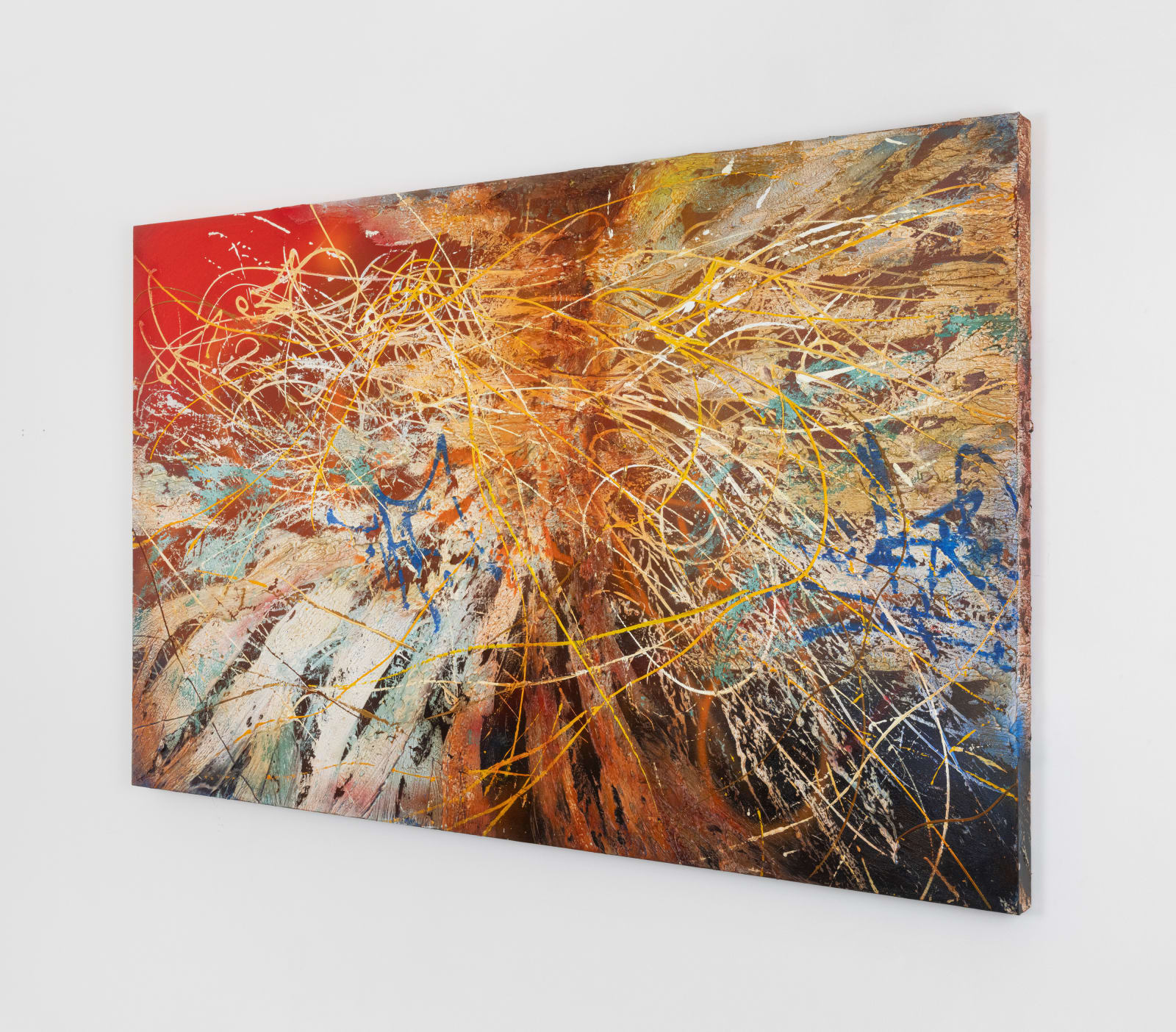


José Parlá Cuban American, 1973
Psycho-Geographical Texture, 2023
Acrylic and oil on canvas
152.4 x 243.8 cm. (60 x 96 in.)
Copyright The Artist
Further images
José Parlá’s Psycho-Geographical Texture (2023) is a richly layered meditation on the embodied experience of place and the psychic imprint of the urban environment. Executed with his characteristic gestural intensity,...
José Parlá’s Psycho-Geographical Texture (2023) is a richly layered meditation on the embodied experience of place and the psychic imprint of the urban environment. Executed with his characteristic gestural intensity, the work draws upon Parlá’s long-standing engagement with the textures, rhythms, and palimpsestic surfaces of the city. As with much of his oeuvre, this painting is not simply a representation of urban life but a record of its accumulation, a visual archaeology of spatial memory and affective geography.
Rooted in his peripatetic biography – shaped by formative years in Miami, New York, Havana, and Puerto Rico – Psycho-Geographical Texture synthesises the personal and the collective, the local and the global. The title itself evokes the Situationist notion of psychogeography: the relationship between place and consciousness, and the emotional resonances that urban spaces imprint upon the individual. Parlá literalises this concept through mark-making that mirrors the spatial logic of wandering, layered, erratic, and instinctive.
The painting’s surface bears the hallmarks of Parlá’s sustained investigation into the materiality of memory. Accretions of paint, calligraphic scrawls, erasures, and abrasions suggest the lived-in patina of city walls. The calligraphic inscriptions channel the legacy of street art but also echo the gestural immediacy of Abstract Expressionism and the tactile urgency of Art Informel. The influence of hip-hop’s improvisational poetics remains visible, yet here it converges with a broader aesthetic concern: the sedimentation of time within surface.
In Psycho-Geographical Texture, Parlá navigates between the macro and the micro – the city as sprawling environment and as intimate sensorium. The work bristles with energy that feels simultaneously external and internal, a visual rendering of affective states conditioned by urban experience. Cracks, stains, and fading pigments register the passage of time, while layered strata evoke the psychological architecture of memory itself, built, weathered, and revised.
As with his earlier Phosphene and Blossoms of Mould / Ciclos series, this work emerges from a period of profound physical and existential vulnerability. The organic forms embedded in the painting’s matrix suggest interconnected systems – whether neural, social, or ecological – aligning the urban fabric with biological life. In this respect, the painting becomes an argument for the city as a living, breathing, and remembering entity.
Rooted in his peripatetic biography – shaped by formative years in Miami, New York, Havana, and Puerto Rico – Psycho-Geographical Texture synthesises the personal and the collective, the local and the global. The title itself evokes the Situationist notion of psychogeography: the relationship between place and consciousness, and the emotional resonances that urban spaces imprint upon the individual. Parlá literalises this concept through mark-making that mirrors the spatial logic of wandering, layered, erratic, and instinctive.
The painting’s surface bears the hallmarks of Parlá’s sustained investigation into the materiality of memory. Accretions of paint, calligraphic scrawls, erasures, and abrasions suggest the lived-in patina of city walls. The calligraphic inscriptions channel the legacy of street art but also echo the gestural immediacy of Abstract Expressionism and the tactile urgency of Art Informel. The influence of hip-hop’s improvisational poetics remains visible, yet here it converges with a broader aesthetic concern: the sedimentation of time within surface.
In Psycho-Geographical Texture, Parlá navigates between the macro and the micro – the city as sprawling environment and as intimate sensorium. The work bristles with energy that feels simultaneously external and internal, a visual rendering of affective states conditioned by urban experience. Cracks, stains, and fading pigments register the passage of time, while layered strata evoke the psychological architecture of memory itself, built, weathered, and revised.
As with his earlier Phosphene and Blossoms of Mould / Ciclos series, this work emerges from a period of profound physical and existential vulnerability. The organic forms embedded in the painting’s matrix suggest interconnected systems – whether neural, social, or ecological – aligning the urban fabric with biological life. In this respect, the painting becomes an argument for the city as a living, breathing, and remembering entity.
1
/
12


